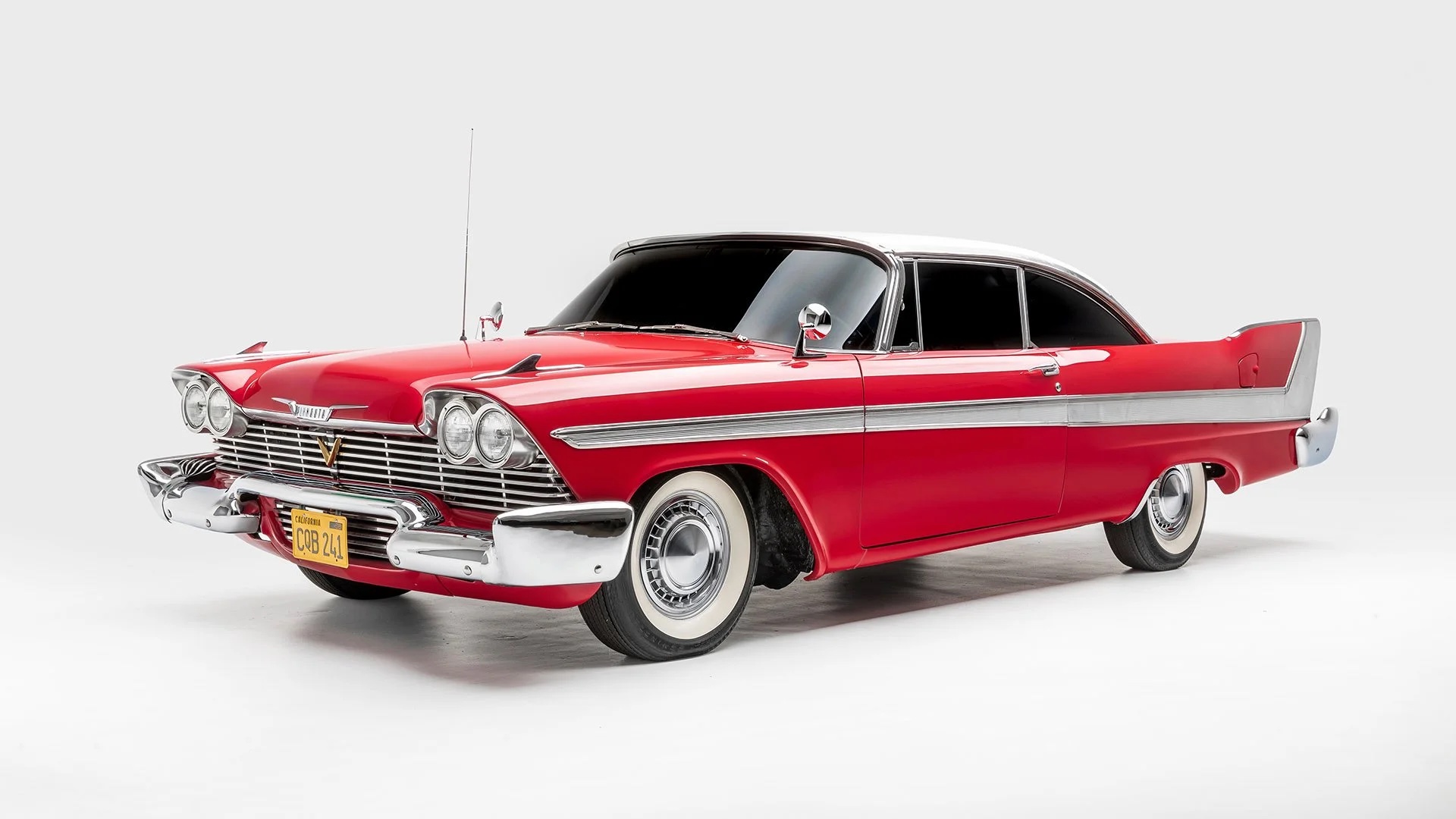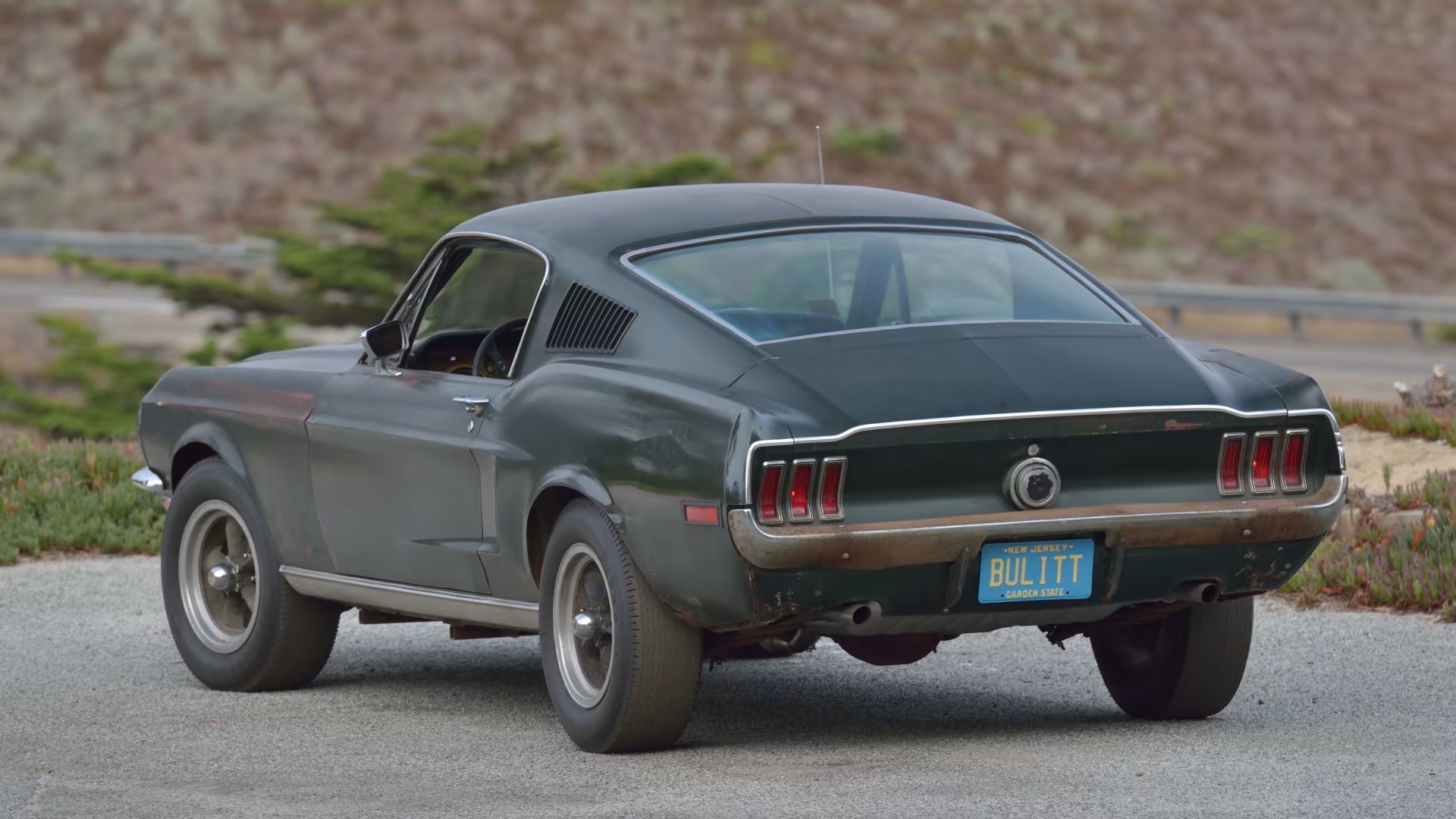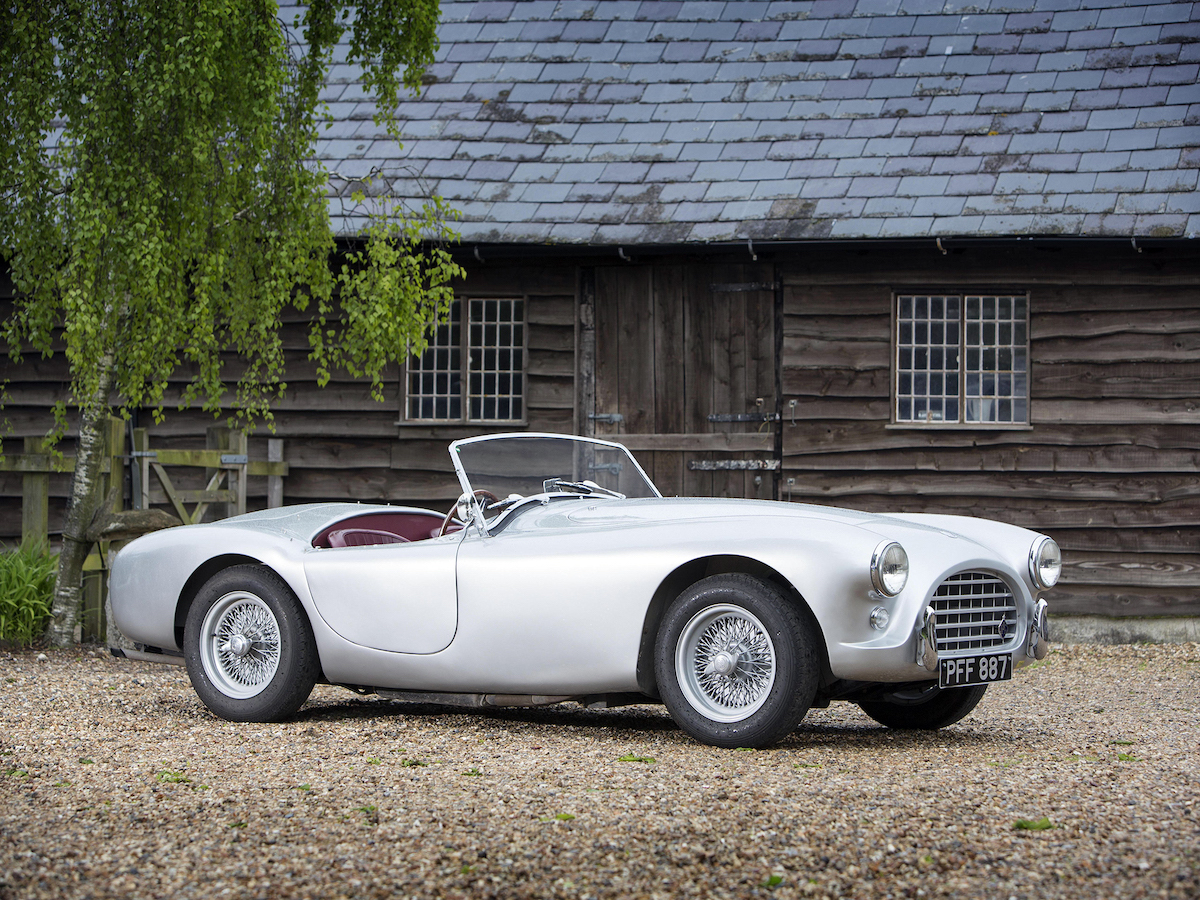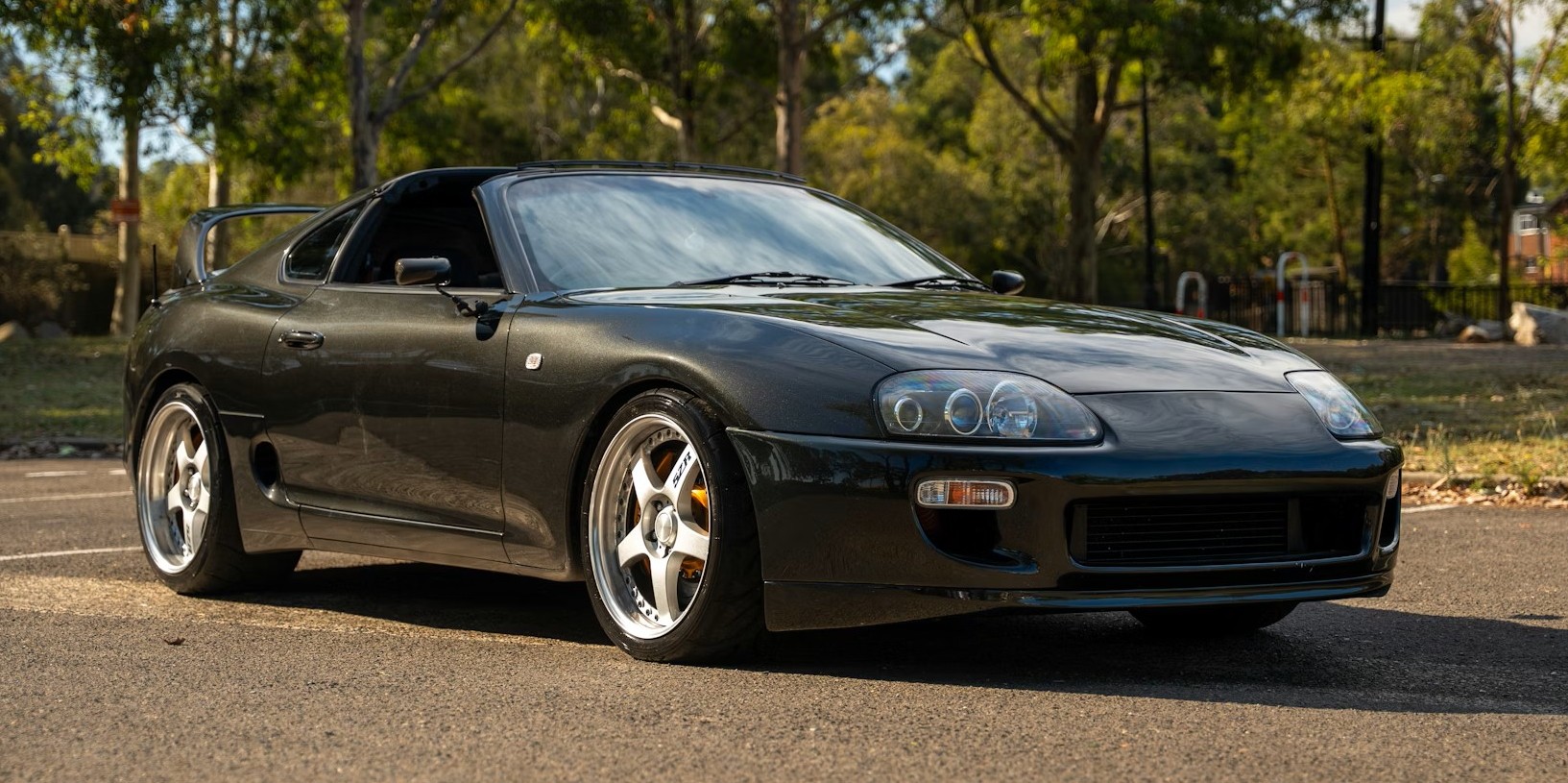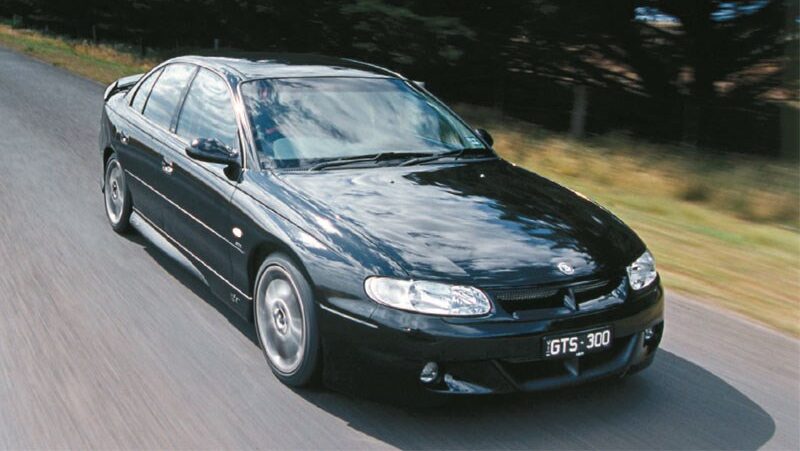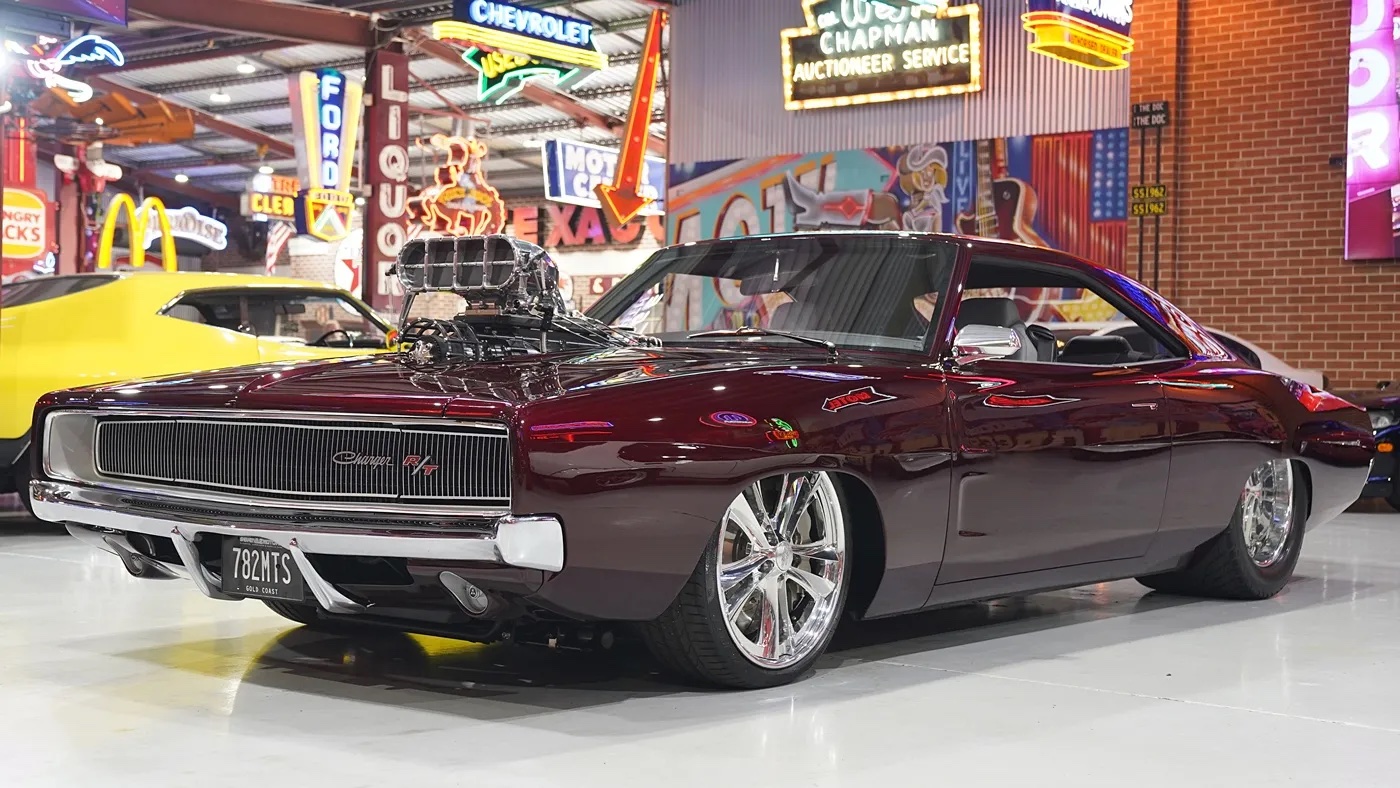How success in rallying fired-up the Subaru WRX phenomenon, making a future classic
Three decades on, it would be easy to recall that the first Subaru WRX was an instant hit, given the sales and World Rally Championship successes it enjoyed through the second half of the 1990s.
But like so many overnight successes the WRX – launched in Japan in 1992 – had been on a slow burn for years before going incandescent. When it hit the big time in 1995 in the WRC, and then 1997 on Australian roads, the WRX shot into the consciousness of enthusiasts like the Pleiades Stars on the Subaru badge.
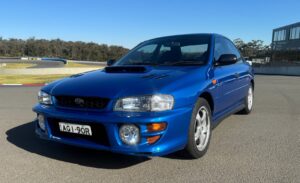
The 1999 Subaru WRX or World Rally Experimental – Image Retro Rides
Sure, the ‘Impretza’ Turbo, as the pommy World Rally commentators called it, impressed with Ari Vatanen and Markku Alén second on debut at Finland’s 1000 Lakes Rally in 1993, but this was to be the sole podium for the agile and compact Subaru Legacy (Liberty) RS successor that season.
With Carlos Sainz strapping on the harness for WRC 1994, the Impreza made life difficult for the Escort RS Cosworth, Celica GT-Four and soon-to-be arch rival Mitsubishi Lancer Evolution, finishing a close second in the Manufacturer’s and Driver’s Championships.
On the fierce battleground of WRC 1995, Subaru, with headliners McRae and Sainz, racked up five round wins including 1-2-3s in the penultimate Catalunya and final British rallies – and a superb second at Rally Australia – to secure its first Driver’s and Manufacturer’s titles. It would add to the trophy cabinet with consecutive Manufacturer’s titles in 1996 and 1997, a first for a Japanese brand.
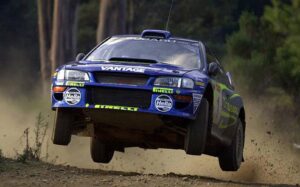
Possum Bourne helped propel the WRX to legend status – Image Subaru
In the Australian Rally Championship (ARC), the late Possum Bourne dominated from 1996 with the original WRX and Subaru stayed on top with a remarkable 10 consecutive victories.
Why the first Subaru WRX was a Wolf in sheep’s clothing
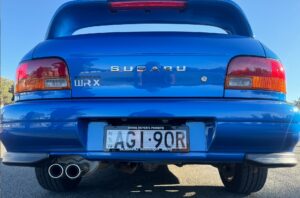
There is no mistaking that WRX rear wing – Image Retro Rides
Okay, enough of the rally history lesson. The point was, the Rex, as Aussies came to know it, did big things in both international and Australian rallying, and those feats went a long way to forging the legend.
Despite its competition success, many people overlooked the performance capabilities of the original Subaru Impreza WRX – for World Rally Experimental – which launched in Australia in 1994. Available in sedan and hatch (wagon) forms and boasting a 155kW 2.0-litre turbo EJ20 flat-four-cylinder engine, five-speed manual gearbox, and all-wheel drive via centre and rear viscous LSDs, it was the ultimate wolf in wool.
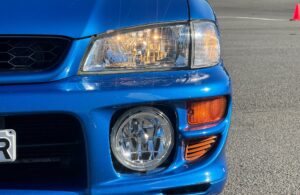
The 1999 WRX is a wolf is sheeps clothing – Image Retro Rides
The bonnet scoop and oversized fog lights attempted to sell the sizzle, but uninspiring 15-inch alloys, a too-subtle boot spoiler, and drab cabin, with Momo leather steering wheel as one of its few highlights, quickly hosed down expectations.
In silver or white especially, an early WRX could almost be mistaken for grandma’s Impreza LX. And many were, often to the embarrassment of uninformed observers left flat-footed away from the lights. Priced initially at $41,990 plus on-roads and rising to $44,990 for 1995 and 1996, the first WRX was a modest seller for Subaru Australia.
That all changed in 1997. With its price reduced to $39,990 and some subtle styling revisions, including form-fitting ‘Extreme Sports Seats’ and a Nardi wheel, the MY97 Impreza WRX brought much-needed lateral support, and sales.
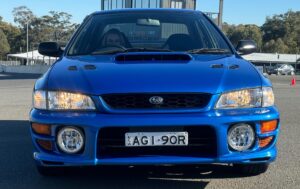
There is no mistaking that Rally inspired WRX air intake – Image Retro Rides
With World Rally moving from Group A to the new WRC regulations in 1997 the WRX was no longer a homologation model, and this gave the MY97 its best feature – a smaller TD04 turbo (rather than MY94-96’s TD05). It delivered a sturdier shove between the shoulder blades with a 20Nm fatter torque curve that started earlier in the revs.
Was it quick? You betcha! Australia’s MOTOR magazine recorded a 5.26-second 0-100km/h and a 13.59-second 400m dash in a particularly healthy WRX press car as part of its 1997 Bang for Your Bucks test. That ranked the little Subaru quicker to 100km/h than a Porsche 911 Carrera 2, at one-fifth the price!
With a four-speed auto now available the WRX was soon registering on the NSW constabulary’s, erm … radar. If you can’t beat ’em, join ’em was the thinking, and what quicker way to catch Rex-wielding ‘ram-raiders’ on their way home from a bank job than in a matching police-issue weapon.

NSW Police adopted the WRX as they were sick of being outgunned – Image NSW Police
Quicker than the WRC establishment, the cops, and almost anyone game to line one up at the lights – local bent-eight royalty included – the WRX was fast on its way to becoming the stuff of folklore.
Riding high, Subaru worked to refine a winning package, introducing the MY98 WRX with purposeful 16-inch five-spoke alloys and a new, Forester-derived dashboard with white-faced gauges.

A stylish upgrade for the 1998 model year was 16 inch alloys – Image Retro Rides
MY99 brought a 5kW bump to 160kW, a more aggressive front bumper, grille and headlights, high-rise boot spoiler, four-spoke Momo wheel, bigger front brakes with four-pot calipers, and a sales graph that was still-climbing.

The high rise rear spoiler came along with a slight power increase for the 1999 model year – Image Retro Rides
The MY00 WRX fiddled round the edges with new six-spoke 16-inch wheels, colour-coded door handles and mirrors, and a chromed ‘AWD’ badge below the right rear taillight to sign off for the series.
While the WRX did the heavy lifting, limited-run two- and four-door Subaru Tecnica International (STi) variants applied a layer of sheen to Subaru’s halo.
Subaru Australia started with a Chase Yellow STi Type R Version 3 two-door evaluation car in 1997, which grabbed the attention of enthusiasts. But it wasn’t until 1999 that a two-door STi officially joined the Australian line-up in the form of 399 Version 5 cars, thanks to one of the 400-unit Australian allocation falling off the wharf in Japan. Seriously!
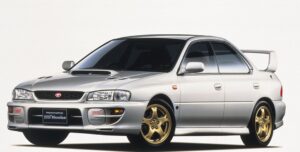
Gold wheels indicate this is no nanny mobile on the 2000 WRX model year upgrade – Image Subaru
To the Rex recipe the 206kW/353Nm STi added forged pistons, hollow stem inlet valves, sodium-filled exhaust valves, a more efficient turbo, close-ratio gearbox, uprated suspension and a quicker steering rack. Sadly, Australia missed out on the Japanese market’s driver-controlled centre diff (DCCD) and intercooler water spray.
Subaru Australia did, however, bring in five of the ultimate, wide-body 2.2-litre, two-door 22B variants from a total production run of 424. Pricey, at $125,000 for a track-only car, Subaru nonetheless secured the requisite four investors, keeping one car for its own collection, and going on to secure ADR compliance for road registration.
A further allocation of 400 STi Version 6 four-door sedans landed in 2000, ushering in STi as a fixture from the second-gen onwards.
What it’s like to own and drive a Subaru Impreza WRX
It wasn’t supposed to be anything special when I bought it; just a run-around with a few herbs. The year was 2012 and if the WRX epitomised Bang for Buck at $40K in 1997, the now-15-year-old MY97 was bargain buying at $8500, I figured.
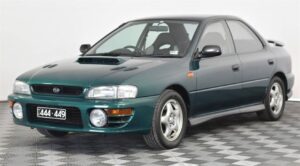
A 1997 Subaru WRX similar to this scribes Subie – Image Grays Online
A deal was done at $7750 and in the dozen years since that Subie has been an absolute cracker to own, blazing the trail for three more WRXs. I’d go as far as to say it’s the best car I’ve ever owned.
Sure, I had admired the WRX in the early years when it hid its knockout punch in a discreet package, but back then I was in the grips of a Mazda rotary phase and by the time every man and his dog had a modified WR Blue MY99, I’d lost interest.
But, having now been well and truly been bitten by the bug, allow me to wax lyrical about why an early WRX is such a great car to own.
The overlying goodness of an old WRX is that it does what few performance/modern classic cars can: it delivers capability and fun without annoying vices and irritating compromises.
For a start, passing decades have revealed that a GC8, like most Subarus of the era, is almost as rock-solid reliable as modern cars get. GC8, in case you’re wondering, is the chassis code of the first-gen Impreza, or GF8 for the hatch.
Sure, there are guys who will tell you that they do head gaskets, big-end bearings, and gearboxes too, but, well… there are also dudes who can break just about anything through a combination of poor maintenance, cranking the boost, and dumping the clutch.
As a jaded long-time motoring journo and enthusiast, I struggle with the concept of a sparkling garage queens reserved solely for Sunday drives.
I’m way more comfortable with a subtly beaten-up rig that channels the DILLIGAF vibe of a long-serving Subaru Outback. That pretty much sums up my good-from-afar black MY97 Limited Edition WRX, which hides a terrific chassis and bulging torque curve beneath its well-worn panels.
A rich history is central to any enthusiast’s love of a marque or model and Subaru and the WRX have this well-and-truly covered from the Brumby era to WRC and PlayStation glory, and ram-raid infamy. But if for all its motoring relevance a classic is rubbish to drive, it will never stay long in my garage. Fortunately, the first WRX has as much to give as a drivers’ car as it does as a nostalgia piece.
It’s a nice-to-drive modern classic that was sufficiently hard-hitting in its day to still feel quick today – after all, fives to 100km/h is rapid enough for most people to have some fun with.
It’s also refreshing to pilot something that’s old enough to be interesting but that doesn’t drive like a relic. A GC8 WRX still feels, in a word, modern.
There’s a uniquely Subaru keenness to the WRX’s steering, the product of the light, all-aluminium EJ20 boxer four-cylinder thrusting a pair of pistons out to each side in its low centre-of-mass configuration.
With uncommon struts-all-round suspension, the WRX soaks crappy roads and speed humps with a hint of the authority that once saw it tame the Acropolis Rally. The Extreme Sports Seats deliver the best long-haul comfort of any ’90s bucket I’m yet to try.
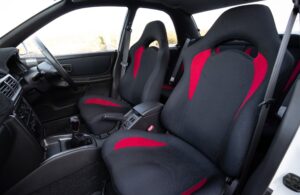
A comfy place to be, the 1999 WRX seats – Image Collecting Cars
While there’s a reassuring unflappability to the dynamics, this is no bland all-paw slingshot, as the AWD Turbo genre might suggest, and my old Rex is happy to bag an inside front tyre or get either, or both ends sliding, at least on standard-sized tyres.
That AWD is a huge plus in the rain, letting a WRX get on with it while the average hot-hatch or sports coupe spins away its performance.
Heaped on top of all the tangible qualities, is a good dose of character. A Subaru EJ Turbo engine with an exhaust has that satisfying and evocative rumble that’s been a constant on the Aussie car landscape for nigh on three decades.
Then there are the little details, such as the frameless door glass – cool and practical – once-signature steering column park light switch, additional bonnet stay position (as seen in WRC Service Parks), satisfying snick/clunk into reverse, and headlights that turn off with the ignition, rather than beeping at you to twist the stalk.
And that’s all true from WRX to STi and 22B, with the latter models doing everything with greater precision and urgency and just a little less comfort.
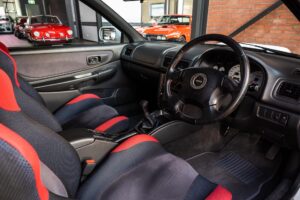
The STI interior has a timeless simplicity – Image Richmonds
Fuel economy of around 9.5L/100km freeway and 13.5L/100km urban seems pretty good to me, but like I said, before my WRX affliction I was an RX-7 guy, so…
Safety, other than of the dynamic kind, is nowhere to be seen – witness ABS as the sole safety feature in a MY97, joined by twin airbags for MY99/00 – but this is more-or-less a given with anything other than prestige German machines running on club plates today.
What goes wrong with the Subaru Impreza WRX, and what are the best modifications to make?
Even 20 years ago it was not uncommon to find early WRXs with more than 300,000km on the original engine. Many of them had high kays, it seemed, because they could.
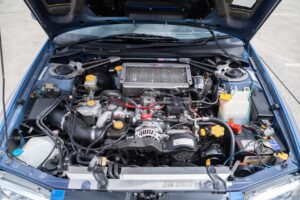
1999 WRX can benefit from an aluminium radiator upgrade – Image Retro Rides
I knew of one bloke who started doing track days in a WRX with 325,000km on the original engine and turbo. Did it go bang? Nope, it just went.
But while it can be hard to kill an early WRX, like any older car there are problems to be aware of and keep an eye out for.
The radiator has a 10-year lifespan, at which point one of the plastic end tanks split and the WRX drops its coolant. Preventative maintenance is the best approach here and an aluminium radiator solves the problem longer-term.
Head gaskets are often suggested as being problematic on old Subies but this is more common on non-turbo EJ engines, since the boosted donks have more robust gaskets to begin with.
That said, lax cooling system maintenance or overheating will inevitably catch up with an EJ20 turbo, as will skipping oil changes.
Airflow meters are a failure point and the root cause of bigger engine problems. This is a MY99/00 problem with earlier cars using a more dependable unit. Preventative maintenance is the way to go here, with a new AFM less than $300 and easily fitted.
Incidentally, the problematic MY99/00 airflow meter actually signals that Subaru switched to a more sophisticated ECU for these models. It can be plugged into and retuned for performance, while the relatively crude ECU in the earlier MY94-97 WRX can’t.
Knocking from the suspension probably indicates shagged sway bar link bushes. It’s cheap and easy to replace the whole sway bar link with OEM-style or upgraded bits.
Eyeball the front lower control arm bushes and if there’s fluid on them, they’re shot. An ‘anti-lift kit’ provides the solution here while enhancing front-end tenacity with a dose of extra static and dynamic caster.
Steering rack bushes also get sloppy over time and polyurethane replacements add way more than their $50 cost in extra steering precision.
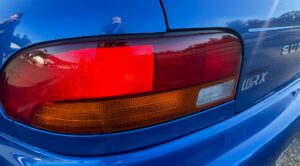
Keep an eye out for tail light water leaks – Image Retro Rides
Water leaks come standard in old WRXs, mostly into the rear quarters and spare wheel well via the taillights. You could reseal the light assembly to the body, or do as I do and take to the boot with a sponge after downpours.
Many WRXs encountered on the used vehicle market will have copped cheapo coil-over suspension and 18-inch wheels for stylistic reasons, but that typically ruins the roll centre geometry and ride.
A better combo for a road-going WRX is fresh set of dampers, a bigger rear sway bar, a handful of poly bushes, and a good alignment on 16- or 17-inch wheels.
If it hasn’t already been done – and it probably has – adding a 3.0-inch turbo back exhaust bumps power and torque from the standard 155/160kW and 290Nm to 200-plus-kW and more than 350Nm. That’s STi performance territory, with the bonus it unleashes the classic boxer burble.
For MY99-on WRXs, the more sophisticated standard ECU has the potential for tuning to suit bolt-ons, with a ball-bearing turbocharger such as an IHI VF34 a great place to start in the search for a broad spread of grunt.
Subaru Impreza WRX values and the best alternatives
The first-generation WRX and STi market is a tale of two halves…
While the haloed 22B is considered JDM (Japanese Domestic Market) royalty and has experienced price growth up there with the priciest Nissan Skyline GT-R R34 – both now honing in on the $500K mark – and STi two-doors typically nudge six figures, regular Australian-delivered WRXs aren’t highly prized… yet.

The Subaru WRX 22b wide body, only 5 made it to Aussie shores – Image Subaru
If it’s not an STi or, better still, a two-door, it’s not special, is the attitude, it seems; one that has seen many WRXs go unloved over the years.
The silver lining is that right now, you can own a cracking drivers’ classic for relatively little dough. Read: starting in the low teens and topping out around $40K for the finest, low-kay WRX, which is right where tatty STi four-doors kick off.
You won’t have much choice in 1994 to 1996 cars given relatively few were sold, but MY97-00 cars are easy to find.
The jury is out on the most collectible WRX. The later cars made a bigger impression on more enthusiasts, but the early girls have their charm.
But what else could you buy?
A Mitsubishi Lancer Evo I to VI is a logical choice – or a 1992-1996 CC Lancer GSR, if you can find one – but the focused Evo is more akin to an STi than a WRX, so less of an all-rounder, and pricier.
Nissan’s S14 and S15 200SX offered up similar bang for buck when new but strong price growth of ’90s and noughties Nissan coupes put them in a higher bracket today.
Although the WRX’s arrival undermined the performance credentials of Holden’s V8 SS Commodore and Ford’s Falcon XR8, they represent different markets, with unique appeal: albeit at a similar price point.
The internet may argue that an Evo is quicker or a two-door turbo Nissan is cooler, but since this is my story, I’ll go first: you’re wrong.
It’s WRX FTW.
Specifications 1994-2000 Subaru Impreza WRX
Body: Sedan/Hatch
Engine: 1994cc horizontally opposed four-cylinder, 16 valves, turbocharged
Power: 160kW @ 5600rpm (155kW MY94-98)
Torque: 290Nm @ 4000rpm (270Nm @ 4000-4800rpm MY94-96)
0-100km/h: 5.26sec (MOTOR, 1997)
Price (new): $39,990
Price (now): $13,000 to $40,000
Specifications Subaru Impreza WRX STi Version 5/6 (Australian delivered)
Body: Two-door coupe/four-door sedan
Engine: 1994cc horizontally-opposed four-cylinder, 16 valves, turbocharged
Power: 206kW @ 6500rpm (195kW @ 6000rpm V6)
Torque: 353Nm @ 4000rpm (343Nm @ 4000rpm V6)
0-100km/h: 4.9sec (claimed)
Price (new): $60,000
Price (now): $40,000 (poor four-door) – $100,000+ (Excellent two-door)
Subaru Impreza 22B STi
Style 2dr coupe
Engine 2212cc horizontally-opposed four-cylinder, 16 valves, turbocharged
Power: 206kW @ 6000rpm (220-230kW unofficially)
Torque: 363Nm @ 3200rpm
0-100km/h: 4.6sec (claimed)
Price (new): $125,000
Price (now): $400,000-plus



